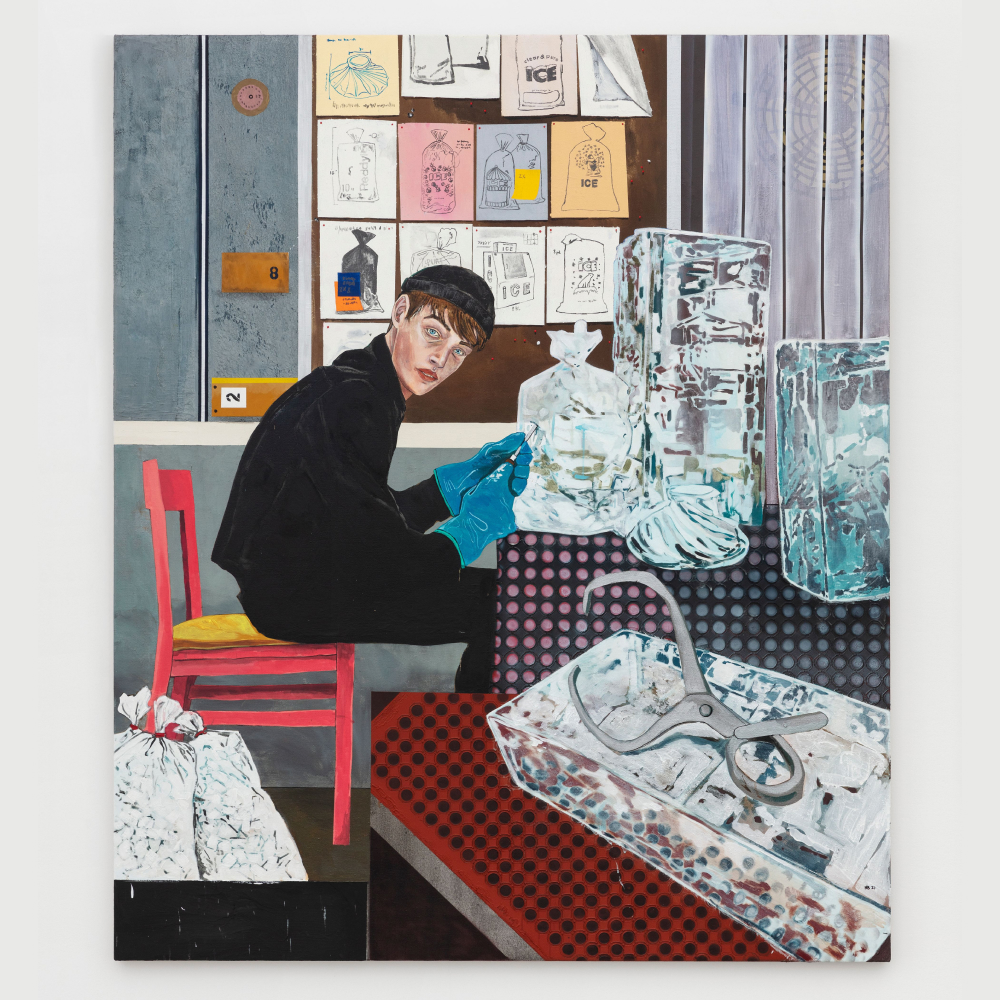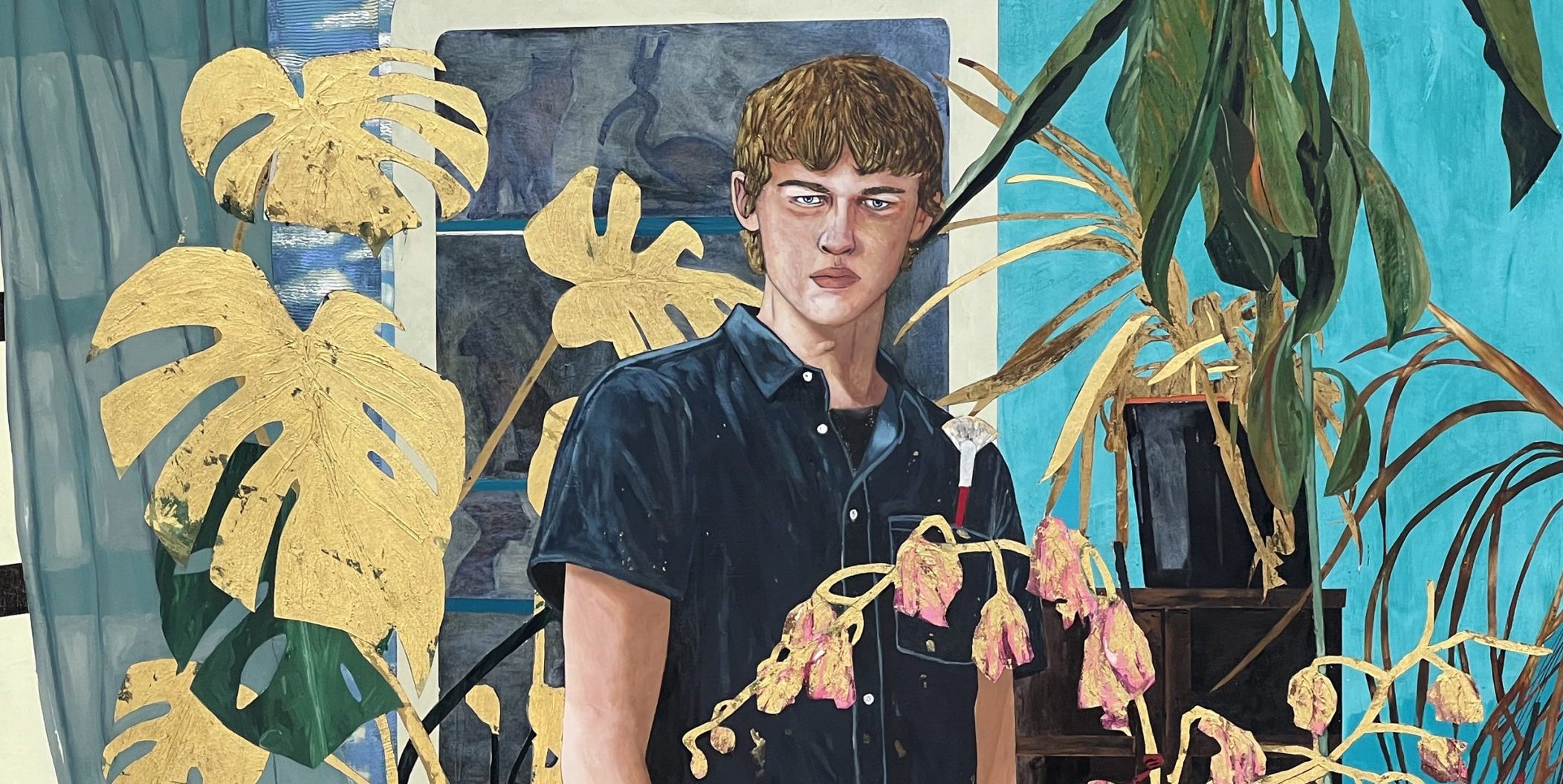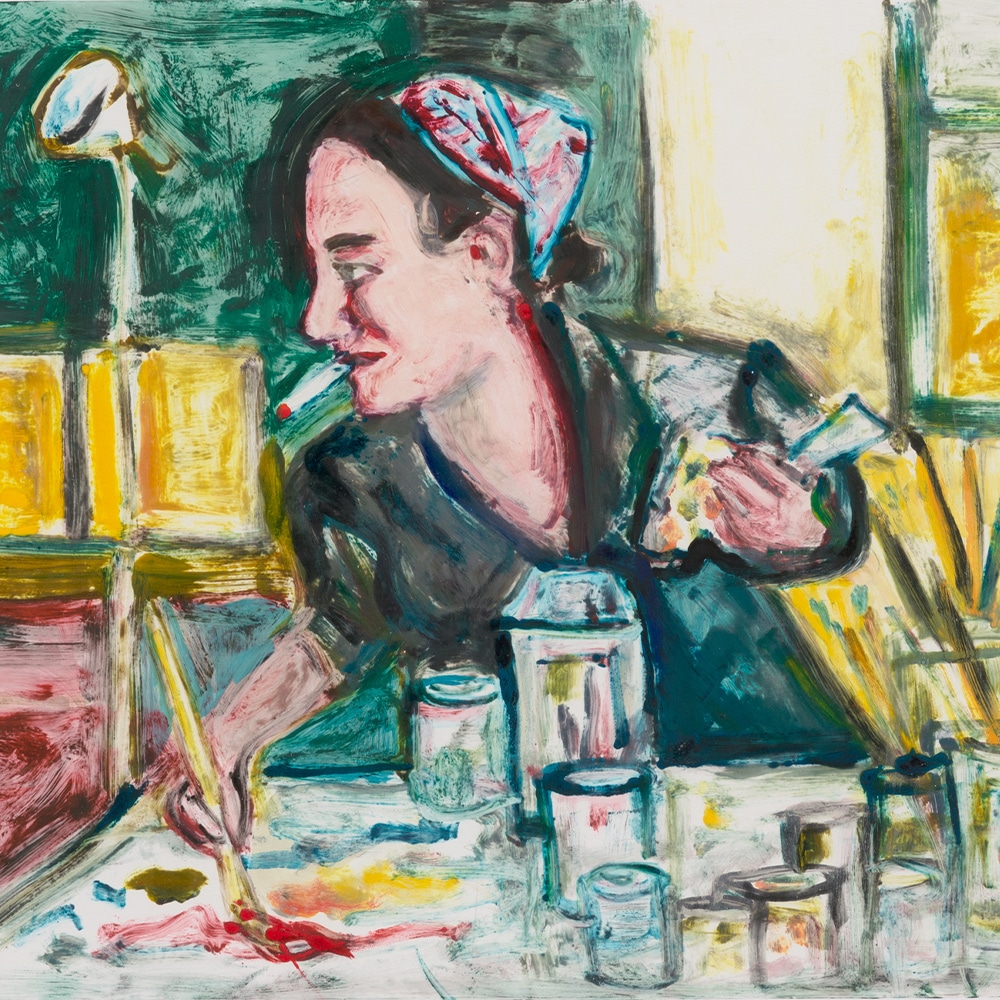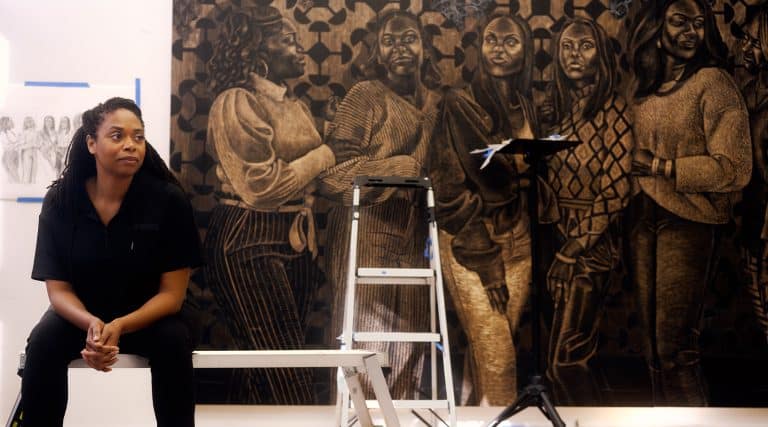January 7, 2024Colorful figural painting has been especially prevalent in the art world over the past few years, and the work of Miami-based artist Hernan Bas is sharing in that moment.
In his biggest museum show ever, “Hernan Bas: The Conceptualists” — up through May 5 at the Bass Museum of Art in Miami Beach — each of the 35 recent works on view depicts a similar young male figure in a different richly painted, highly detailed scene.

Bas certainly isn’t afraid of color. In fact, the affable artist, 45, says he’s “one of those painters who wish there were more colors in the spectrum.” (That love of hue is particularly evidenced by his appreciation of pink flamingos, as seen in Florida Living, his 2017 installation at the SCAD Museum of Art, in Savannah, Georgia.)
But there’s a quality that makes these works — some of which were shown at New York’s Lehmann Maupin last year — unlike the other of-the-moment colorful, figurative works out there. Museumgoers will find something a bit odd in all these evocative, allusive scenes, something that departs from a conventional sense of reality.
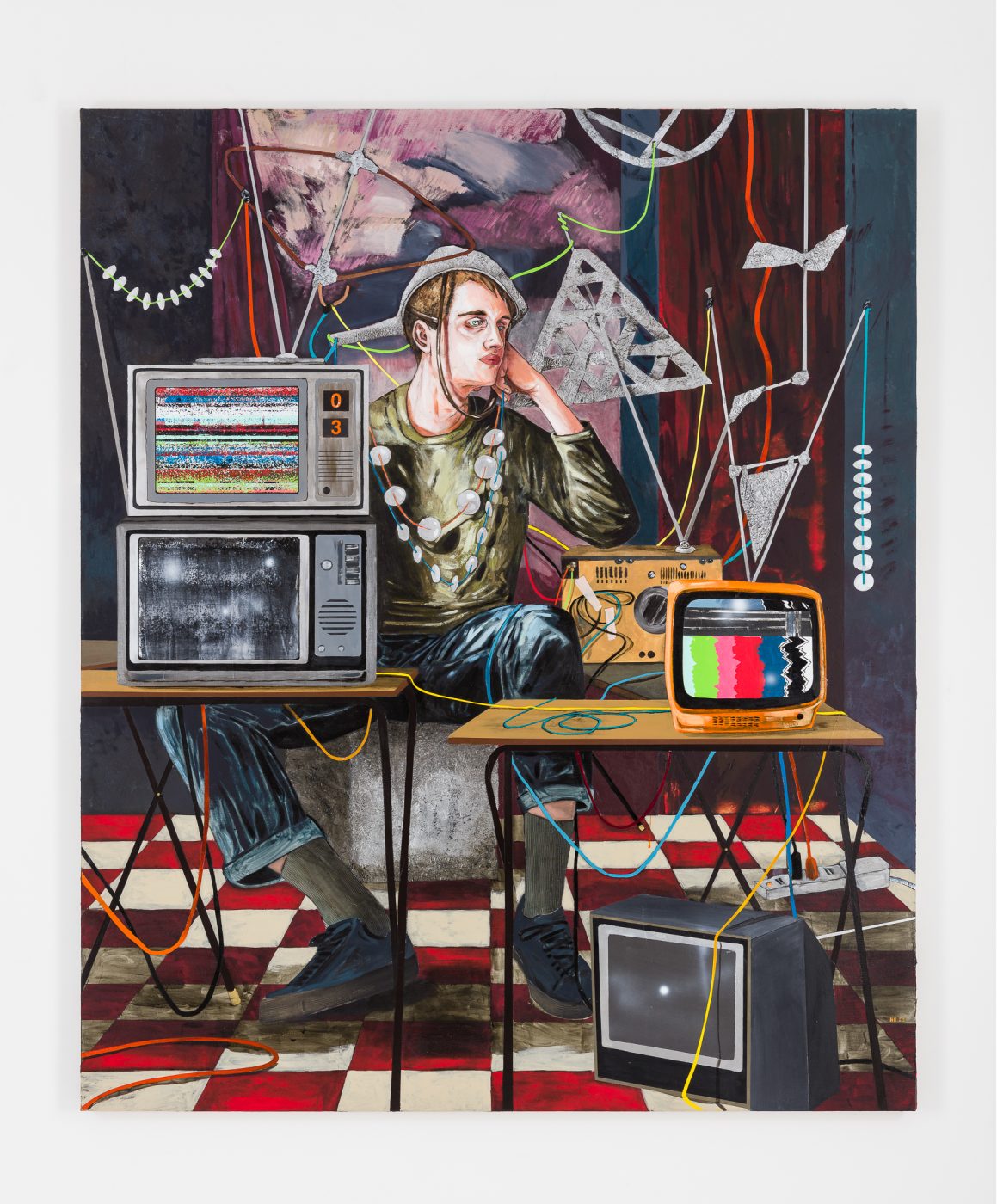
In Conceptual artist #20 (Performance based; acting as his own receiver, He’s been seeking a signal from the airwaves for over a decade), 2023, a young man sits amid a pile of old-fashioned TVs as if repairing them. But he appears to have a tin-foil hat on — the type that conspiracy theorists are said to wear, while the TV screens show only static and test patterns.
Bas “has this peekaboo game going on, giving you just a bit of the information about what’s going on but not all of it,” says Silvia Karman Cubiñá, the Bass’s executive director and chief curator, who wanted to showcase a local artist to celebrate the museum’s 60th anniversary.
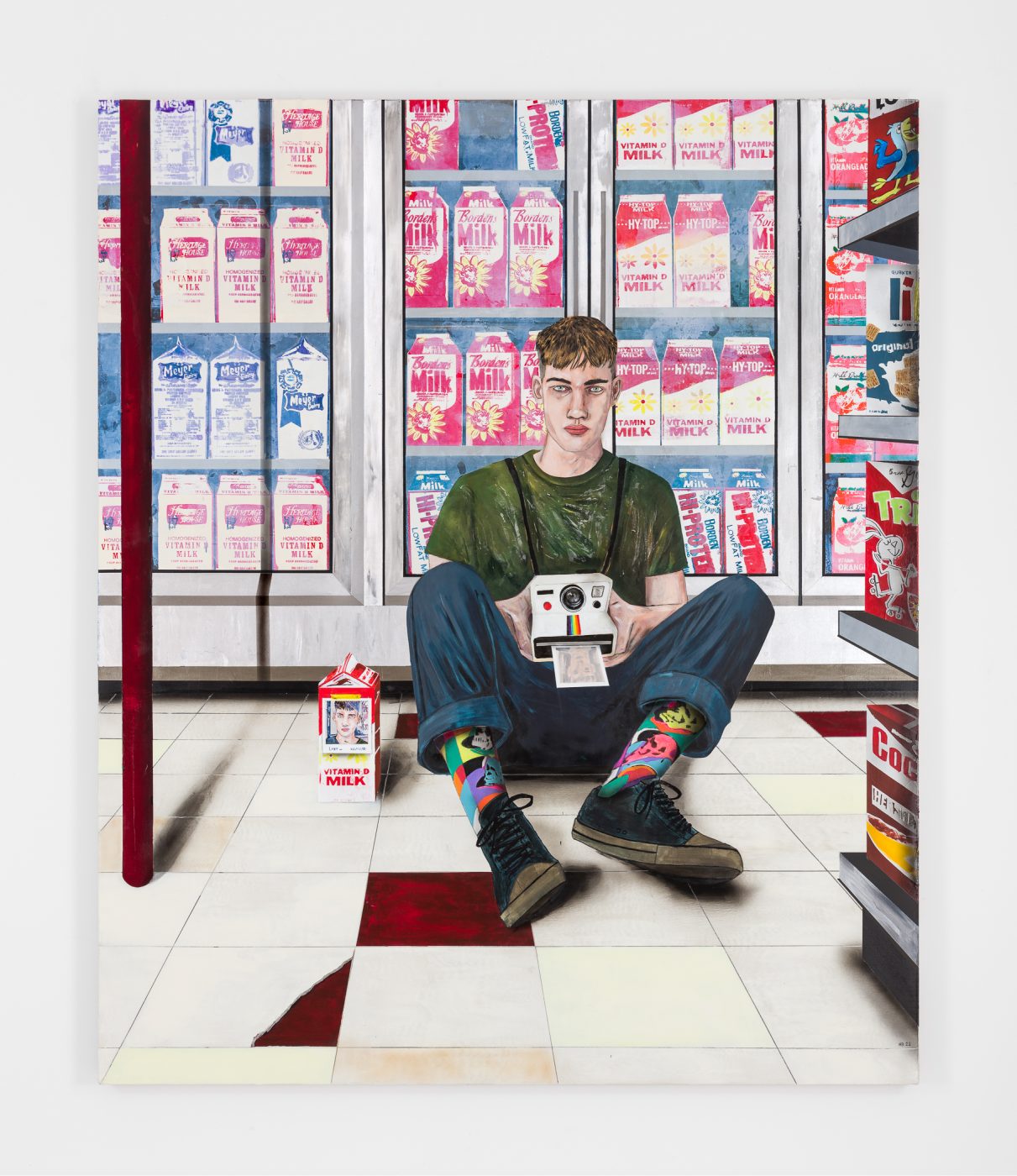
A similar protagonist is sitting on the floor in front of a grocery store’s milk display in Conceptual artist #19 (A child of the 80’s, he places his Polaroid self portraits in a familiar spot whenever he’s feeling lost), 2023. Wearing Andy Warhol–inspired socks, he has placed a Polaroid of himself on a carton, as if he were a missing child — the search for identity literalized.
All the figures in the paintings are staring either directly at the viewer or off into space, giving a contemplative air to the show. All are also engaged in some kind of creative endeavor (even if it’s quirky), and since most contemporary artists like to wear the mantle of conceptualism — a term that has become a stand-in for smart — the paintings raise questions about creativity itself.
“Every artist wants to be considered a conceptualist, and Bas is playing with that a little bit,” says Cubiñá. “He has always had this humorous way about him.”
Puns abound in Bas’s work. In one, the figure is putting a romance novel through a shredder — pulping some pulp fiction.
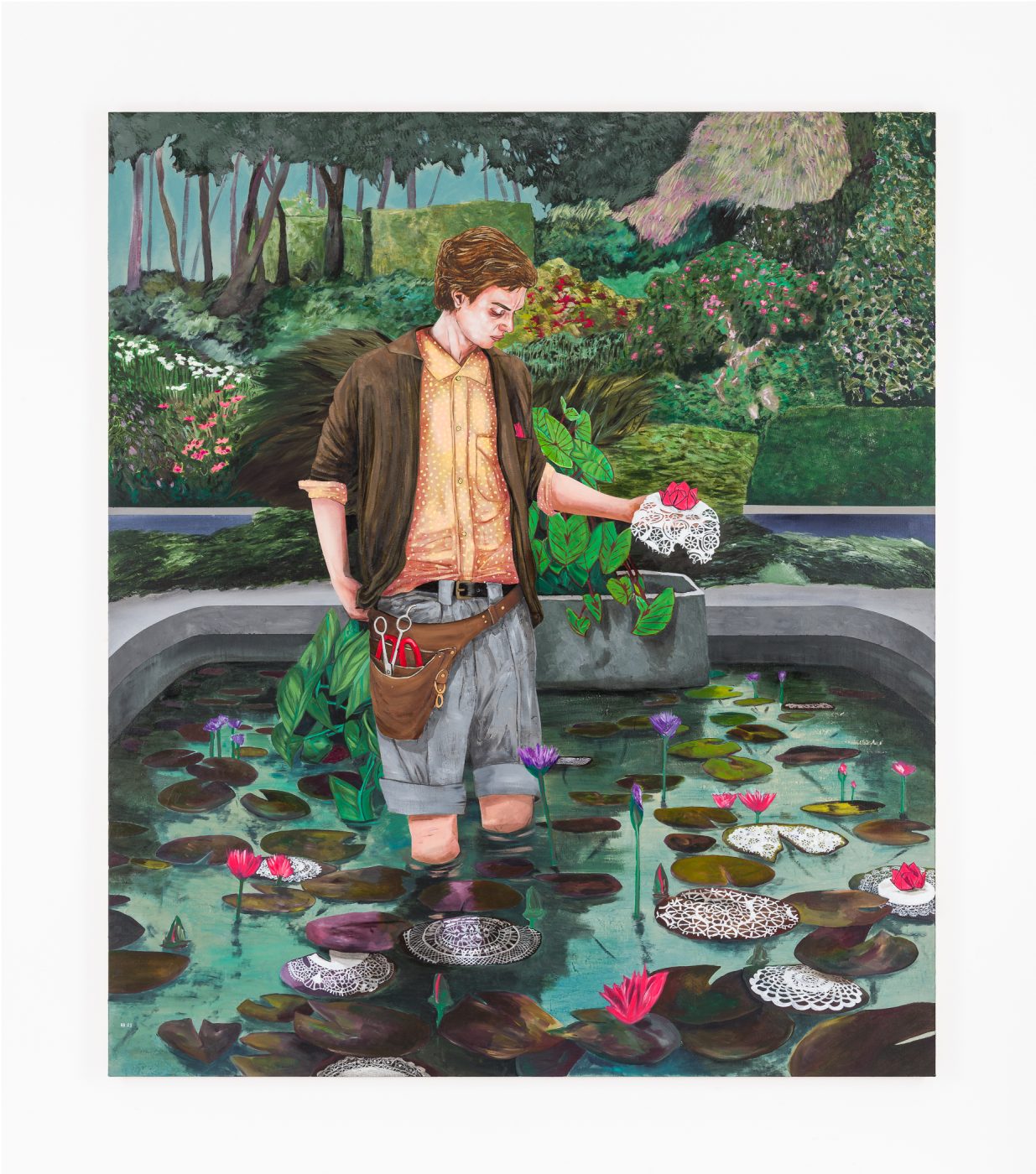
Also embedded in the works are nods to what he calls the “romantic” land art of Andy Goldsworthy and Richard Long. In another “conceptualist” painting from last year, #17, the figure is knee-deep in a reflecting pool making paper-doily lily pads, adding a man-made contribution to a semi-natural landscape.
The paintings give a tip of the hat to actual conceptual artists, too. Those old TVs, for instance, refer to the pioneering video artist Nam June Paik, Bas says. But the series isn’t meant as an homage to the past.
The pictures’ characters live in the present, and the artist presents them at formative moments. “They are caught at a Holden Caulfield age,” Bas says. “It’s that time when you’re an open book and experiences can affect you in a way that’s new. The bread is still in the oven.”
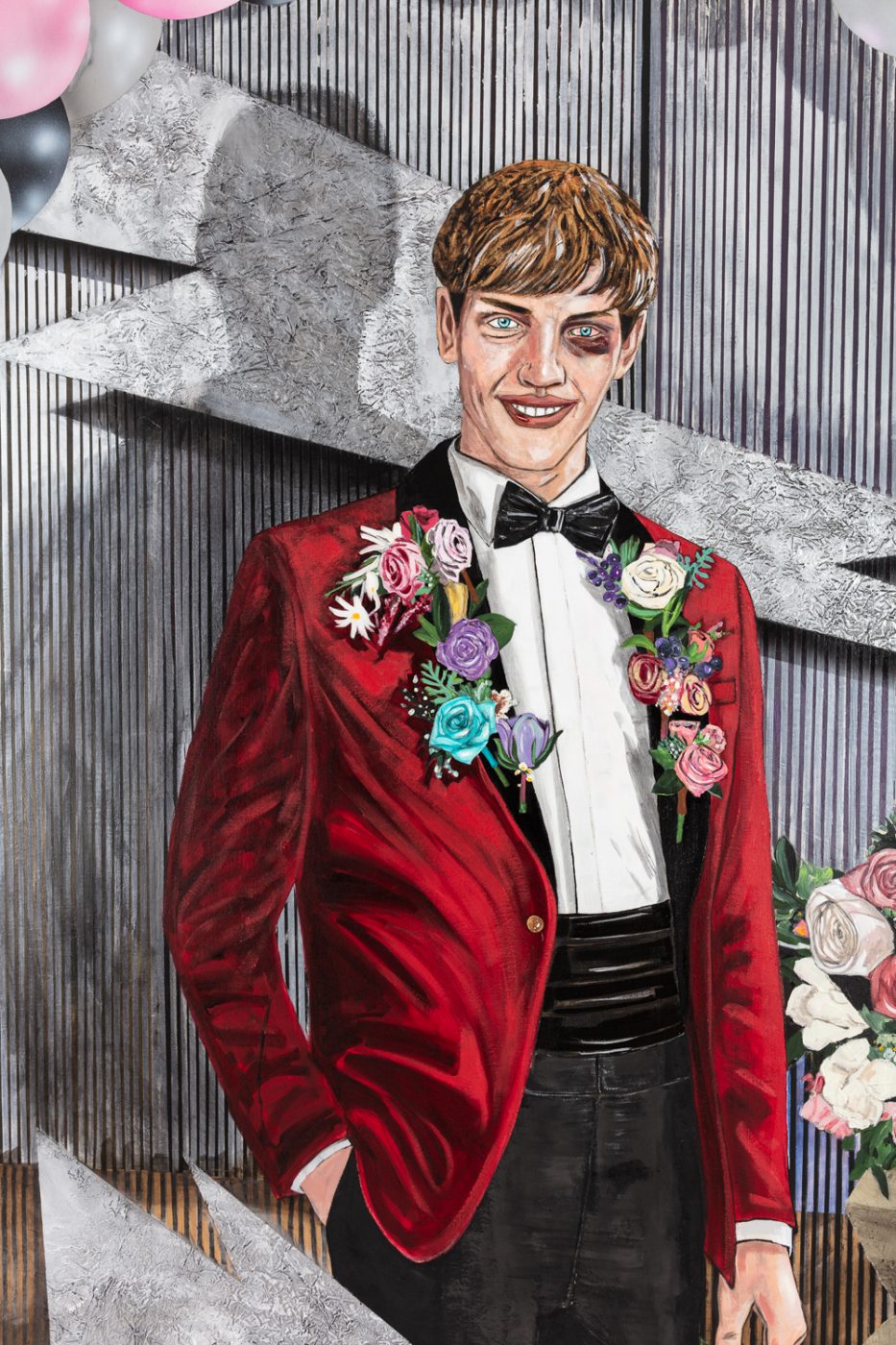
In Conceptual artist #21 (His formative work “prom night,” marked the beginning of a career of works based on acts of disappointment), 2023, the ubiquitous figure is standing alone at a prom that has gone wrong, as evidenced by the plethora of boutonnieres, and a nasty black eye. But he wears a demented smile.
“There’s a tinge of menace to the characters, which I didn’t really realize until I saw them all together,” Bas says.
Who is that repeating male figure?
“I don’t see them all as the same person,” Bas says. “To me they are all different characters — what they look like isn’t all that important to me. They’re a stand-in for anyone. I’m not interested in straight-up portraiture.”
But he does acknowledge they bear a resemblance to a real person. “I used myself a lot as a model in my early work — and I was a lot thinner then,” he says, laughing. “They could pass for me at twenty.”
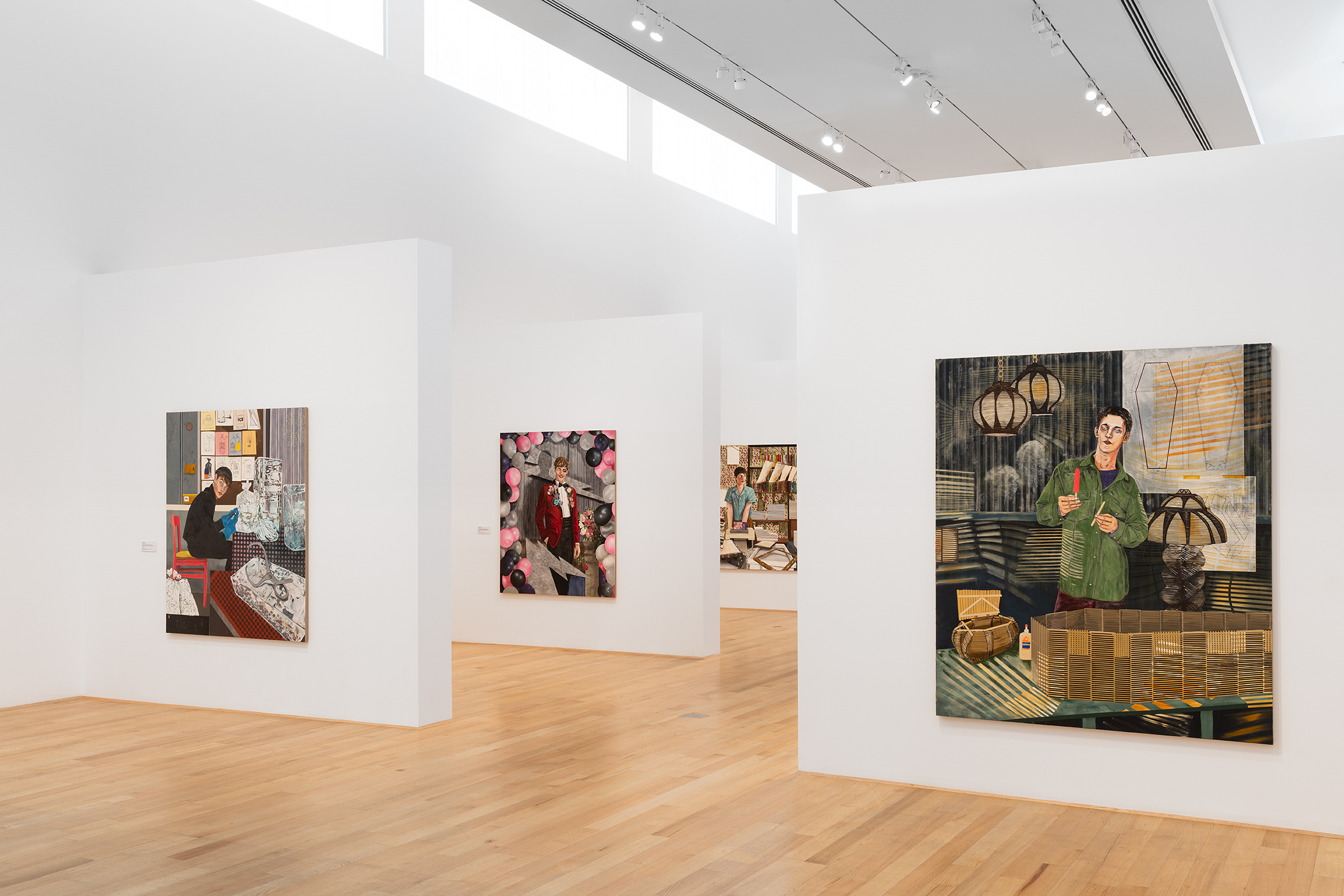
A Miami native, Bas attended that city’s magnet New World School of the Arts, did a semester at Cooper Union in New York and then returned to Miami, where he worked for a time for the Rubell Collection. For two decades, he painted steadily and exhibited his work frequently, first in Miami galleries and then all over the country and the world, always mixing figuration and offbeat storytelling. His largest institutional solo show before “The Conceptualist” was in 2012 at the Kunstverein Hannover, in Germany.
As he began his career, he drew inspiration from a variety of earlier artists, including such French masters as Pierre Bonnard, Édouard Vuillard and Henri Matisse. The influence of those greats can be seen in his paintings’ all-over patterning, color and flat perspective.
“I’m a massive Warhol fan,” adds Bas, whose pieces have a certain Pop art sensibility to them, too.
In earlier work, Bas tackled mythological subjects, and his work was brushier and more expressionistic; he has evolved toward more defined figures and areas of color over the years, leading to the jarring clarity of the scenes in “The Conceptualists,” which seem both familiar and alien.
Bas doesn’t use assistants. He spends a long time on the early stages of a piece, in particular scale drawings of the scene he wants to paint. He does the last stage fairly quickly, sometimes completing a picture in a couple of weeks.
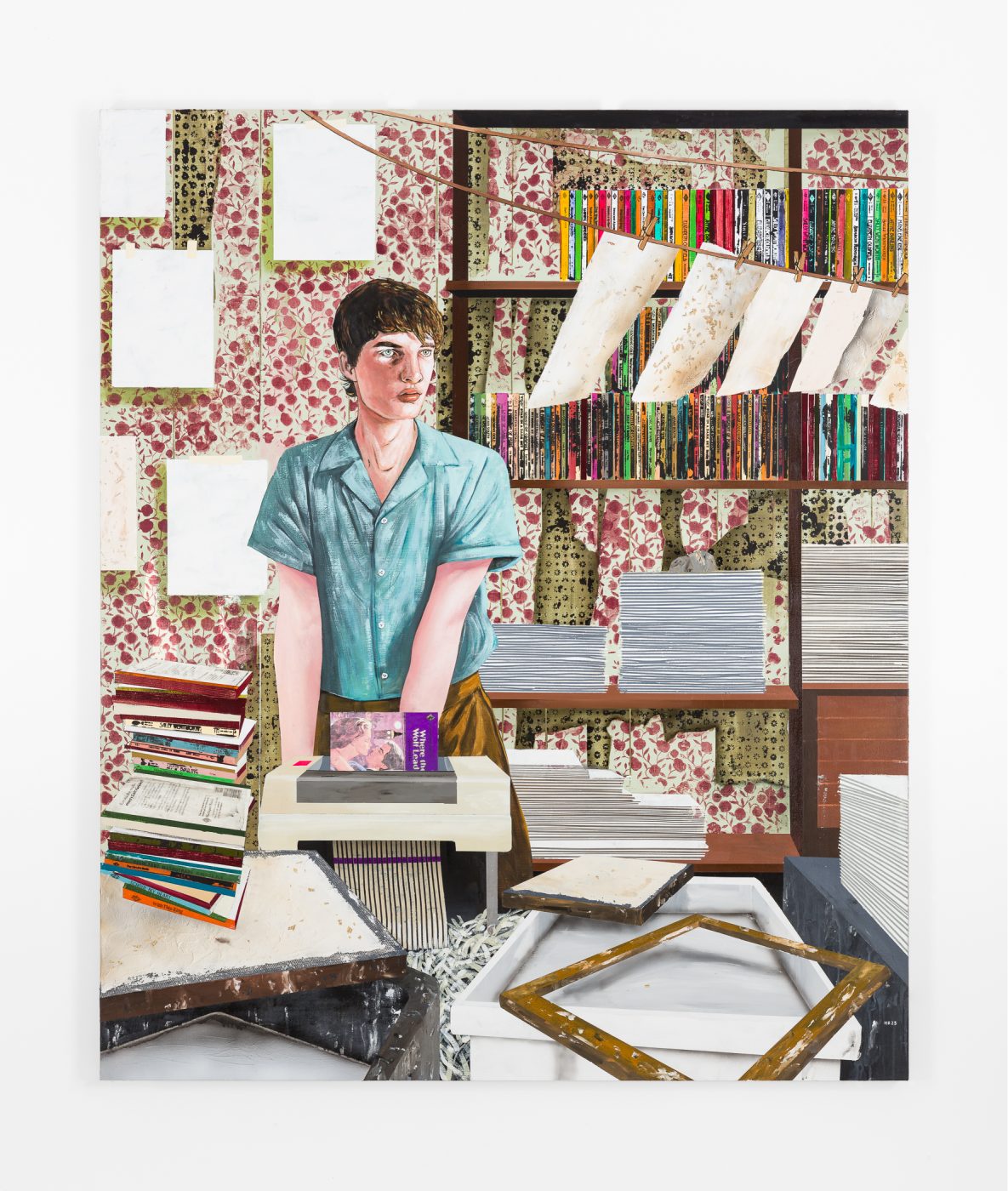
The Bass show culminates with his biggest painting ever, a magnum opus measuring 9 by 21 feet that includes references to all the other works “Where’s Waldo” style.
It is installed on a wall by itself at the far end of the gallery. Here, the paintings’ repeated character seems to be revealed as the author of all the other scenes. He, it turns out, is the talent who has been depicting, in Bas’s words, “thirty-five conceptual artists who never existed.”
“In a way, it’s a summation of this body of work,” he says. “It’s the greatest hits from the series.”
With his characteristic humor, Bas has presented the viewer with a beautifully painted Möbius strip, looping around in an elegant and disorienting way and no less satisfying for its trickiness.
“I hate the word meta,” he says. “But this series has a lot of layers.”
